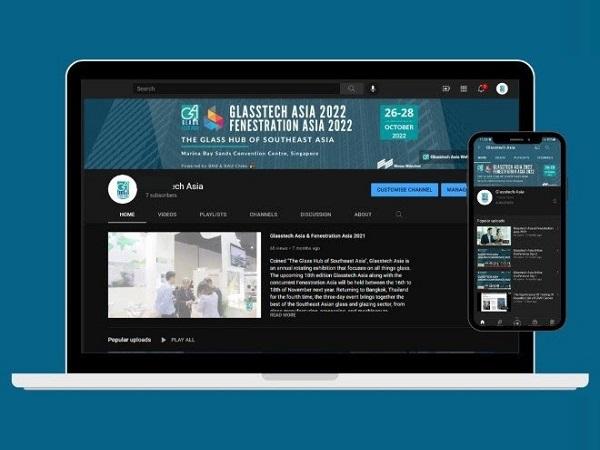
Date: 25 November 2021
Glasstech Asia x PERAFI Webinar #4, successfully held on November 18, was joined by more than 200 attendees from around the globe such as Hungary, South Korea, Russia and Sri Lanka.
The future is fuelled by technological advancements such as artificial Intelligence, machine learning, virtual and augmented reality and so much more. This webinar opens up the discussion about how these technologies helps to enhance proficiency in design and construction processes, creating a safer environment and transforming the future of the façade industry.
A big thank you to all our attendees, speakers, sponsors, partners and supporting organisations for making this webinar a success.
#GlasstechAsiaxPERAFI HIGHLIGHTS

Hosted by Gwen Tan, Regional Marketing Manager, Dow Performance Silicones and joined by the following speakers:
- Michael Chin, Principal, Arup Singapore Pte Ltd
- Daniels Chandra, Director, ONG&ONG PTE LTD
- Malvinder Singh Rooprai, Senior Technical Program Manager, Kuraray Asia Pacific Pte. Ltd.
- Vyacheslav Scheredin, Head of Technical Department, Pilkington Glass Russia

Daniels Chandra, Director of Ong & Ong Group kicked off the webinar with an introduction of how digitalisation has transformed his workflow, workplace and workforce. The use of a cloud-based system helps everyone to work in the same environment and maintain a single source. With the integration of hardware, people and online processes, the workflow changes from standalone to collaborative. Along with the digital workflow, Daniels emphasised the importance of training staffs to be familiar with the digital environment and being open to having virtual workplaces, where anyone can work from anywhere at anytime.
“It is important to embrace future-ready practice by implementing cloud and digital-centric initiatives." Daniels mentioned.

On a similar note, Michael Chin, Principal of Arup Singapore, detailed his smart design workflow - from parametric design tools, documentation, optimisation and visualisation. More specifically, he covered the use of automation tools to help with solving complex design problem and reporting processes.
“With all the digital tools available, always remember that they are enablers. Don't lose sight of the design. These tools are for us to improve our designs." Michael emphasised.

Vyacheslav Scheredin, Head of Technical Department in Pilkington Russia talked about the accurate interpretation the results of visual distortions on façades. Usually, the worst case load scenario is applied during the calculation process but in most cases, these results are not realistic. Hence, Vyacheslav introduced how to realistically evaluate the bending the façade with some interesting case study to minimise optical distortions.

Looking at the future of façades, Malvinder Singh Rooprai, Senior Technical Program Manager of Kuraray Asia Pacific, shared his hopes of creating safer infrastructure. Glass façades and windows are the weakest element in a building, which poses a challenge in terms of security. Malvinder presented the use of security glazing and its applications in protection against forced entry, ballistic, hurricane and many more.
Wrapping up the webinar, speakers were asked about what they believe is the most promising digital design, process or material breakthrough that will have the greatest influence on productivity and sustainability quality in the façade business over the next 3-5 years.
“While we are getting a lot more complex designs, we should also be mindful of the carbon emission. Aluminium and glass are both carbon-intensive industry. I believe that we can have systems and technologies that will help us go back to basic and simplify things." Michael emphasised.
The rest of the speakers agree that future technologies can help make the industry more sustainable. The collection of data such as from data mining and machine learning, can help to create more green designs and sustainable processes. Although the industry has a long way to go, the speakers believed that we have a good start such as increased productivity from digitalisation and being able to modulate before production to reduce wastage.
In summary, the exchange of information between the industry experts provided insights and different perspectives of how these technologies transform the way their business function. With digitalisation, it opens up new opportunities to collaborate, innovate and address challenges such as sustainability.
WEBINARS ON DEMAND
All sessions were recorded and is available on Glasstech Asia YouTube Channel. Subscribe now to be the first to know when new content is up!
 600450
600450







Add new comment